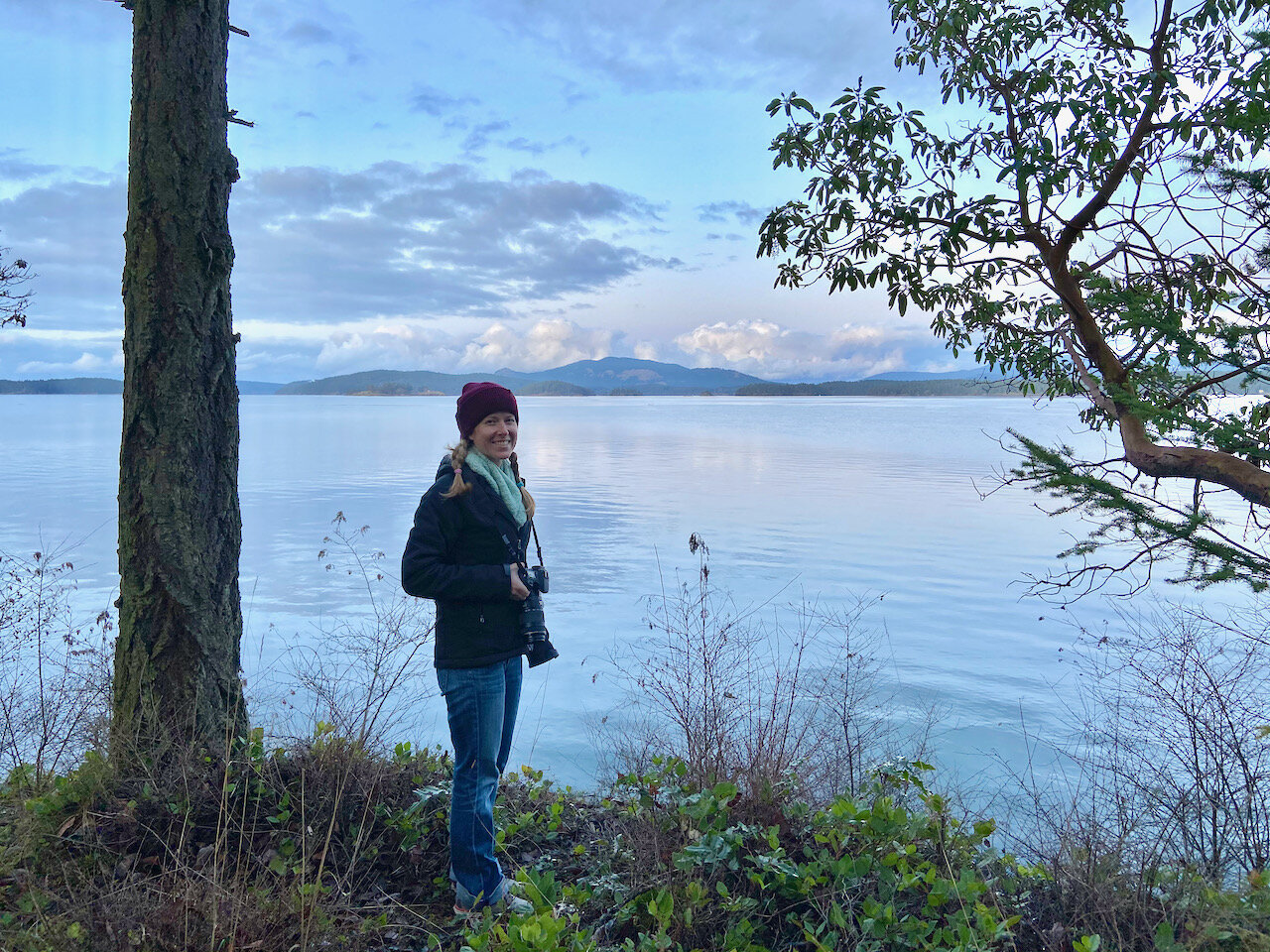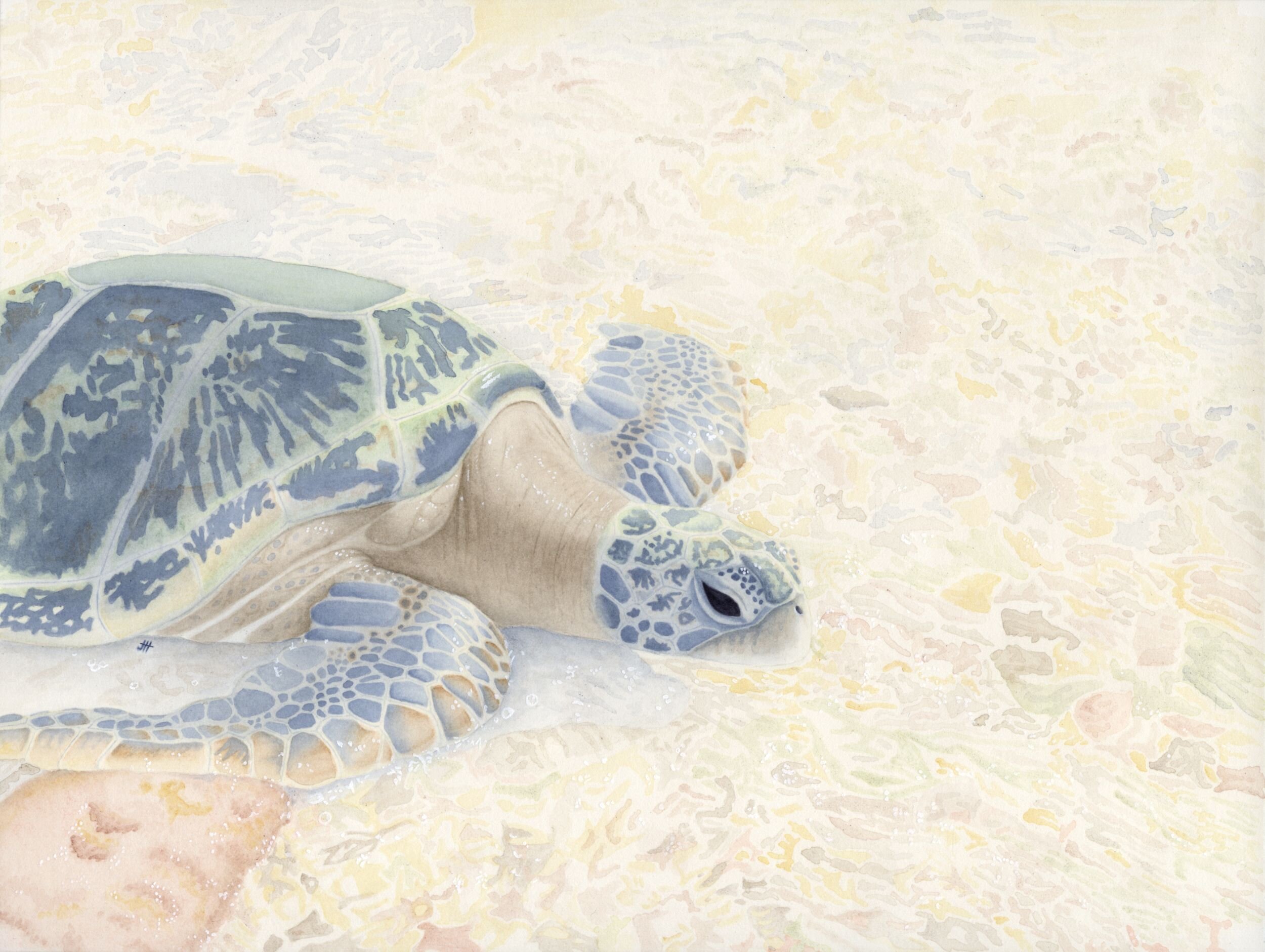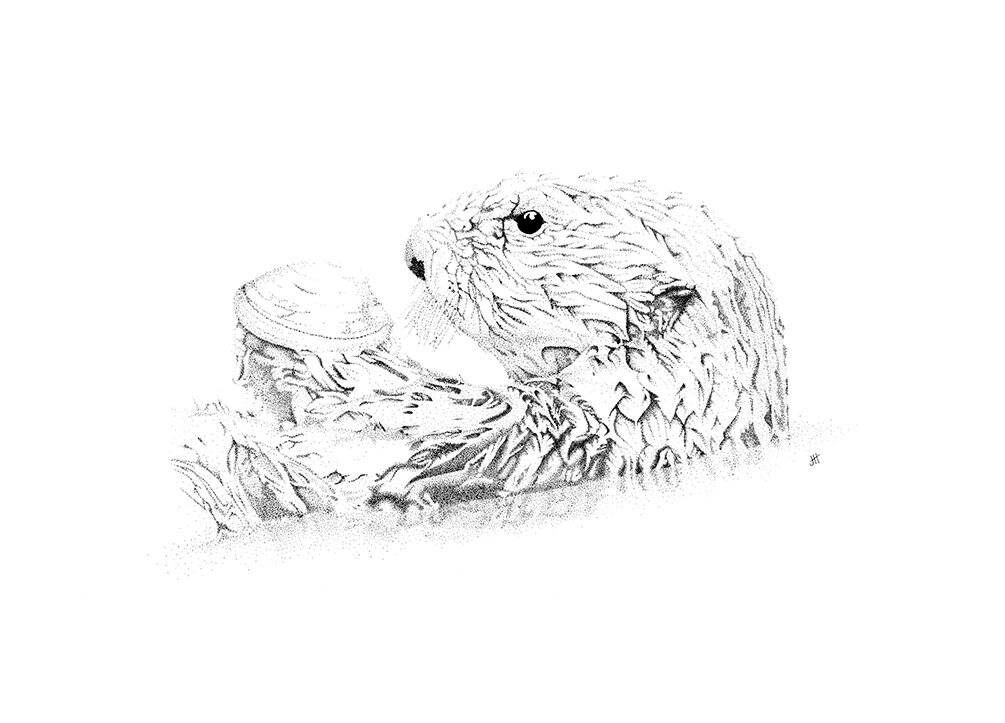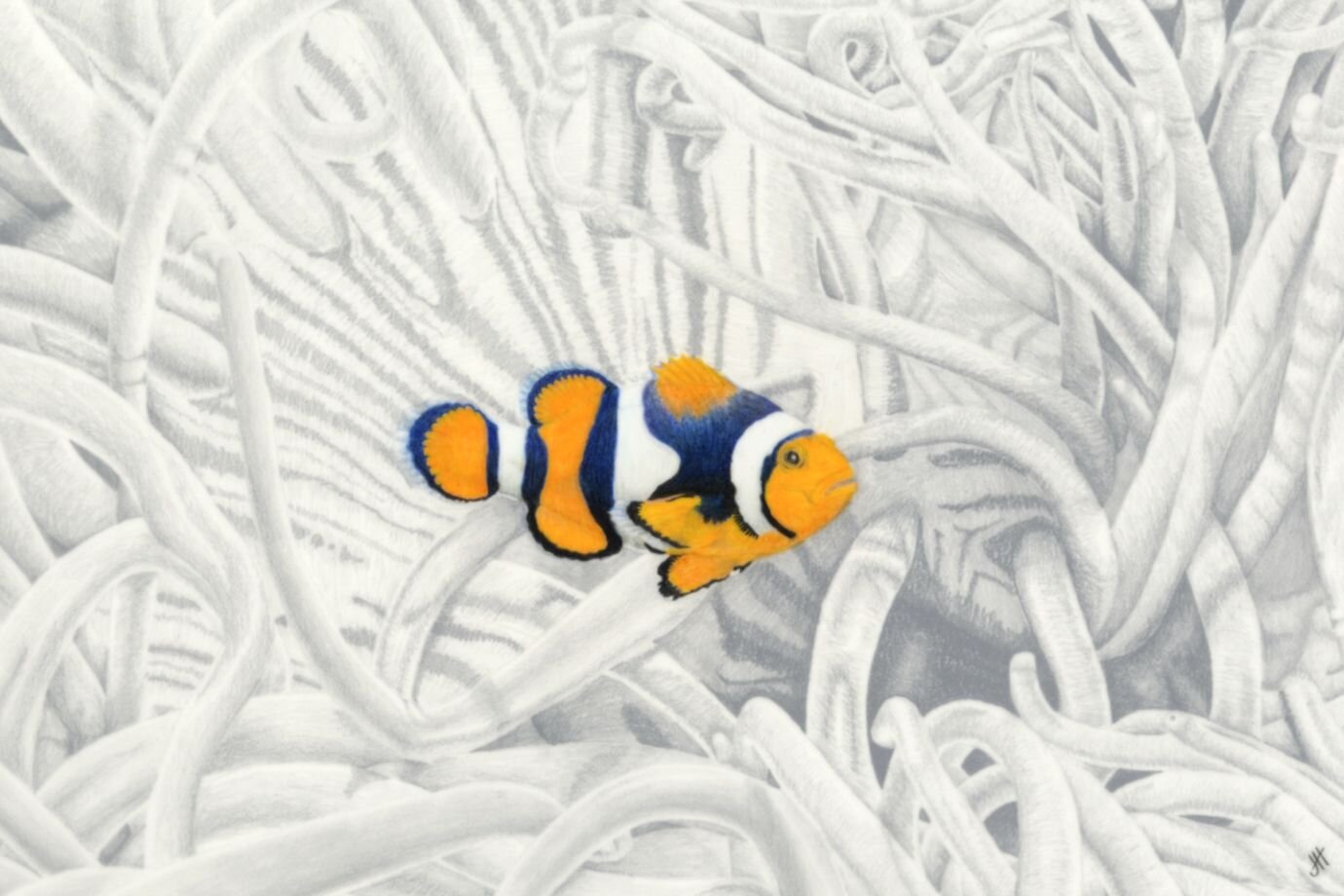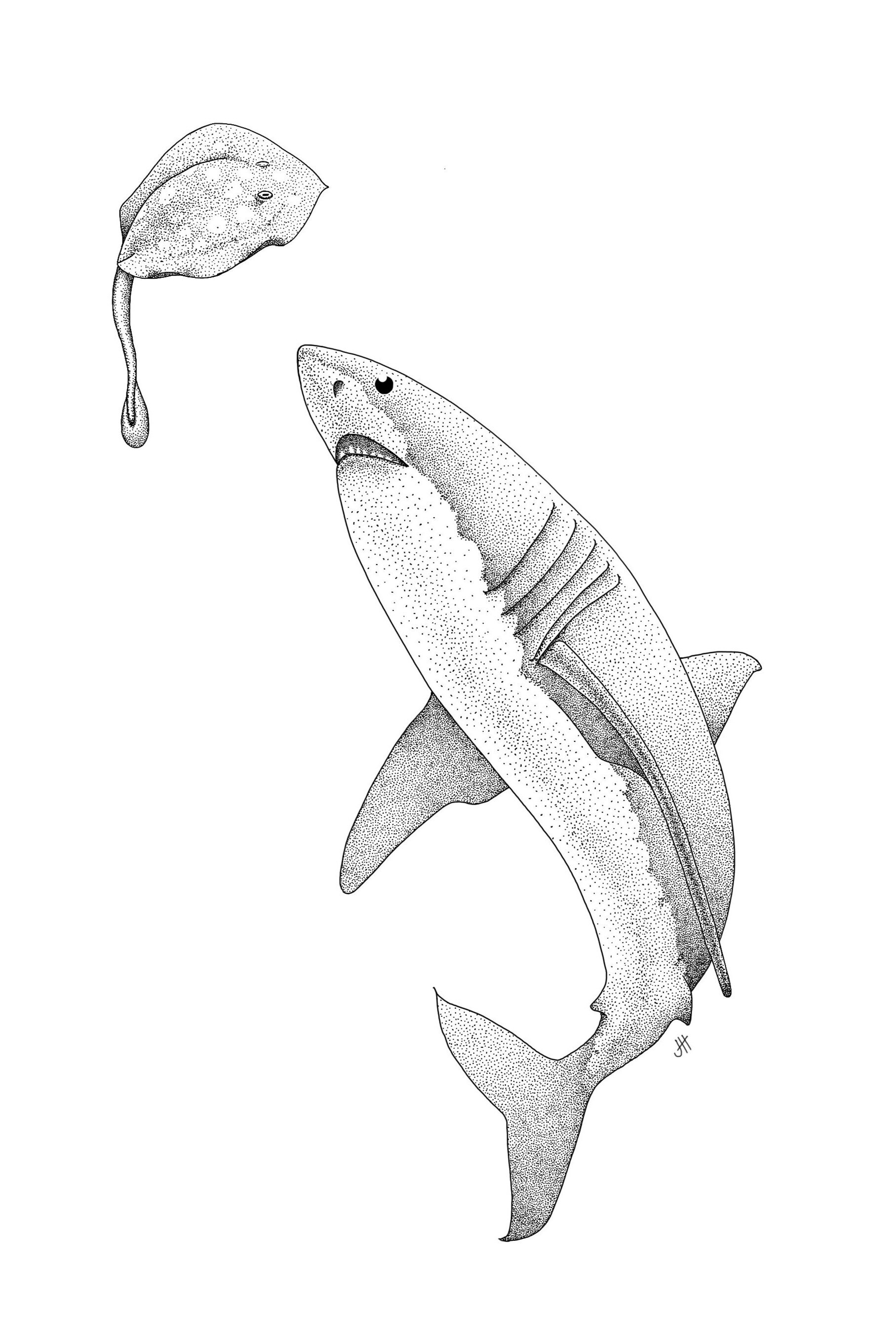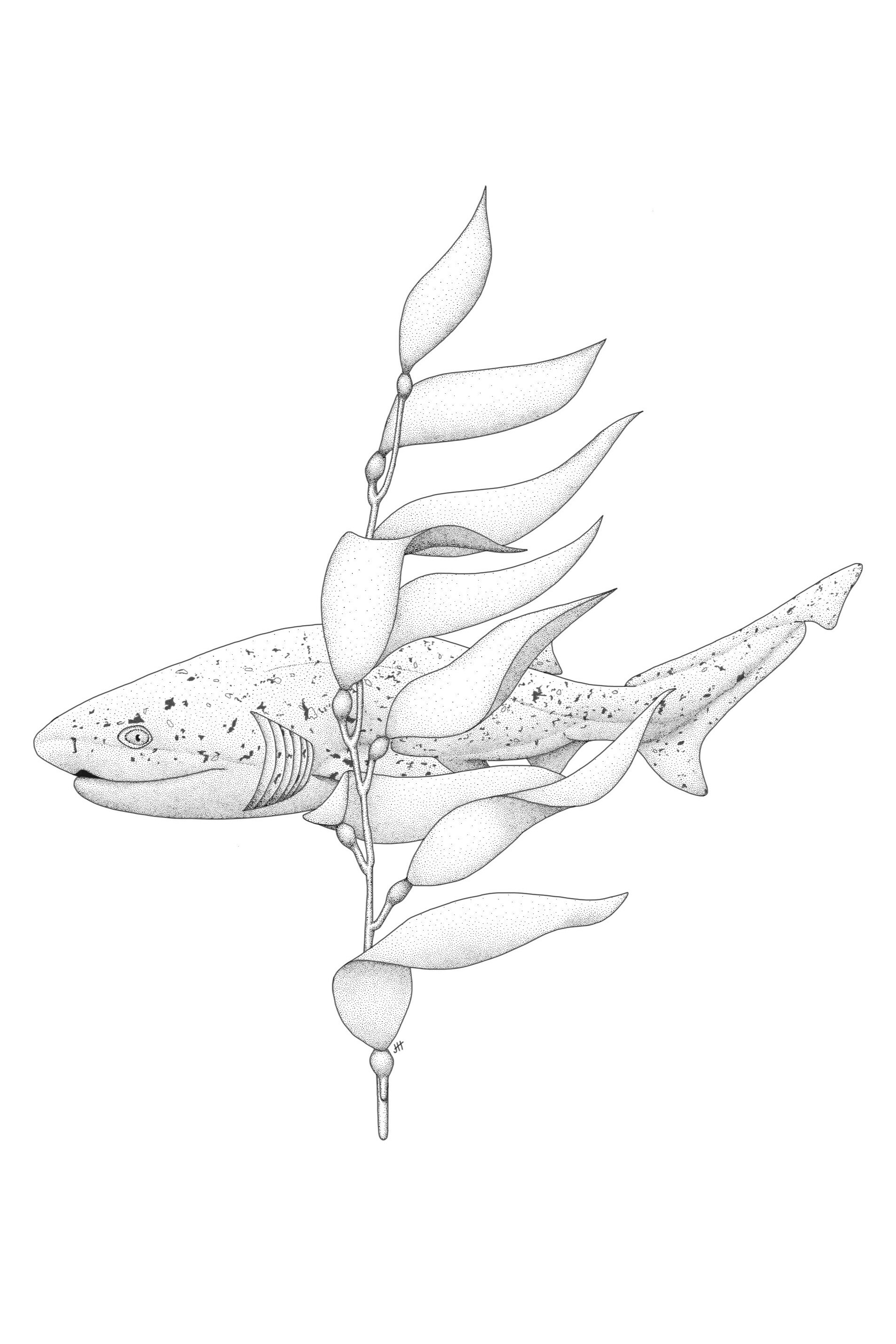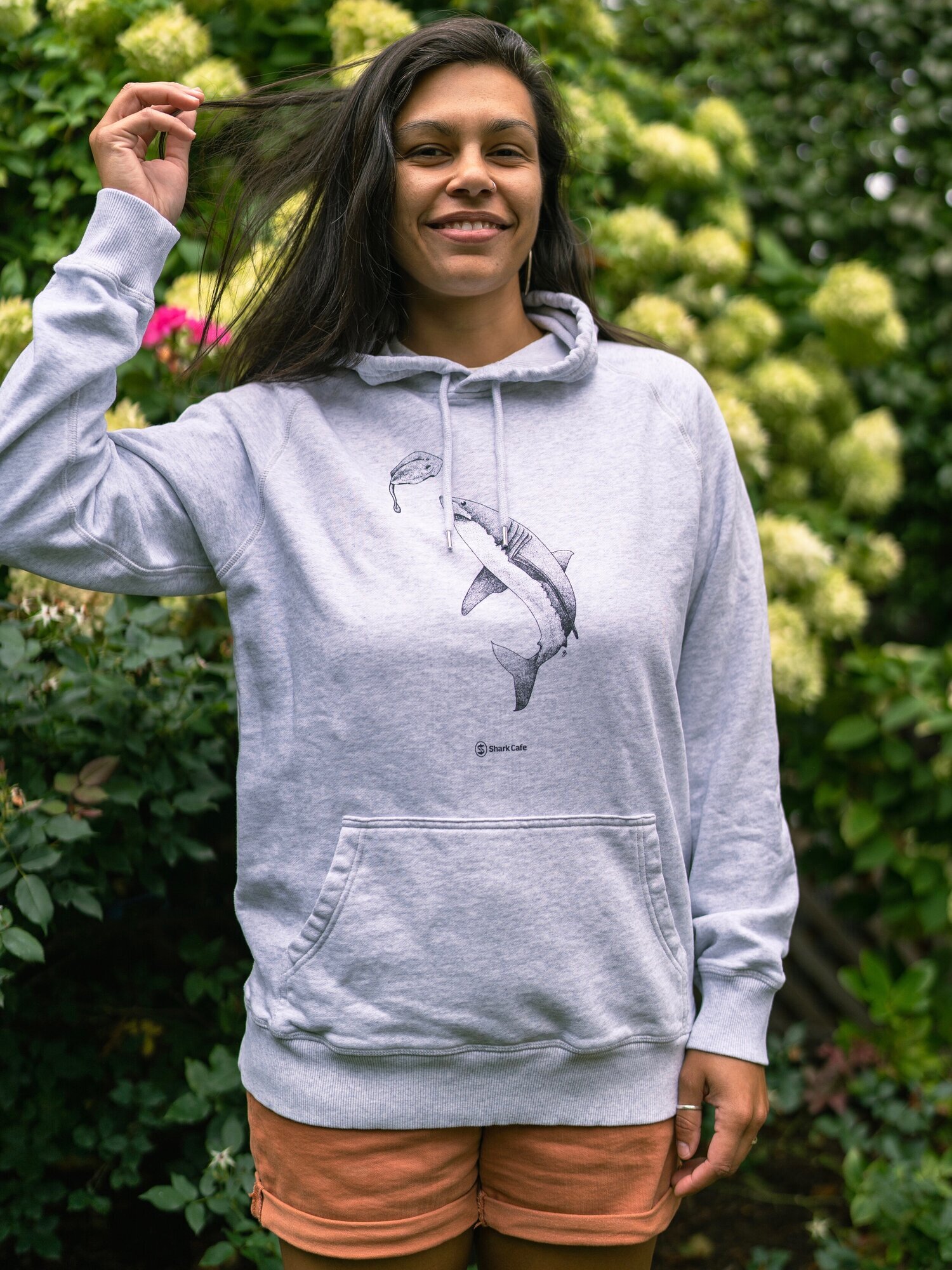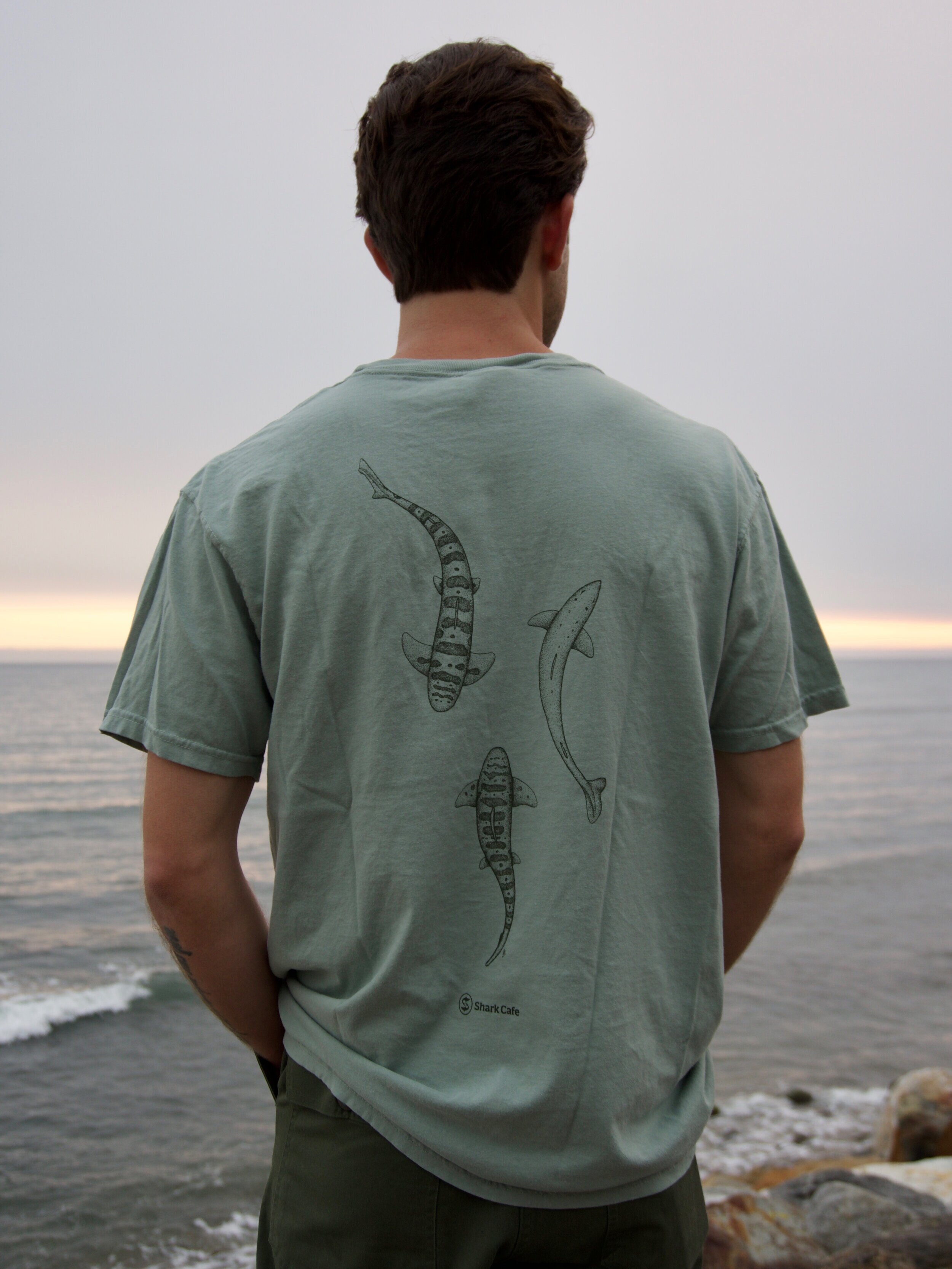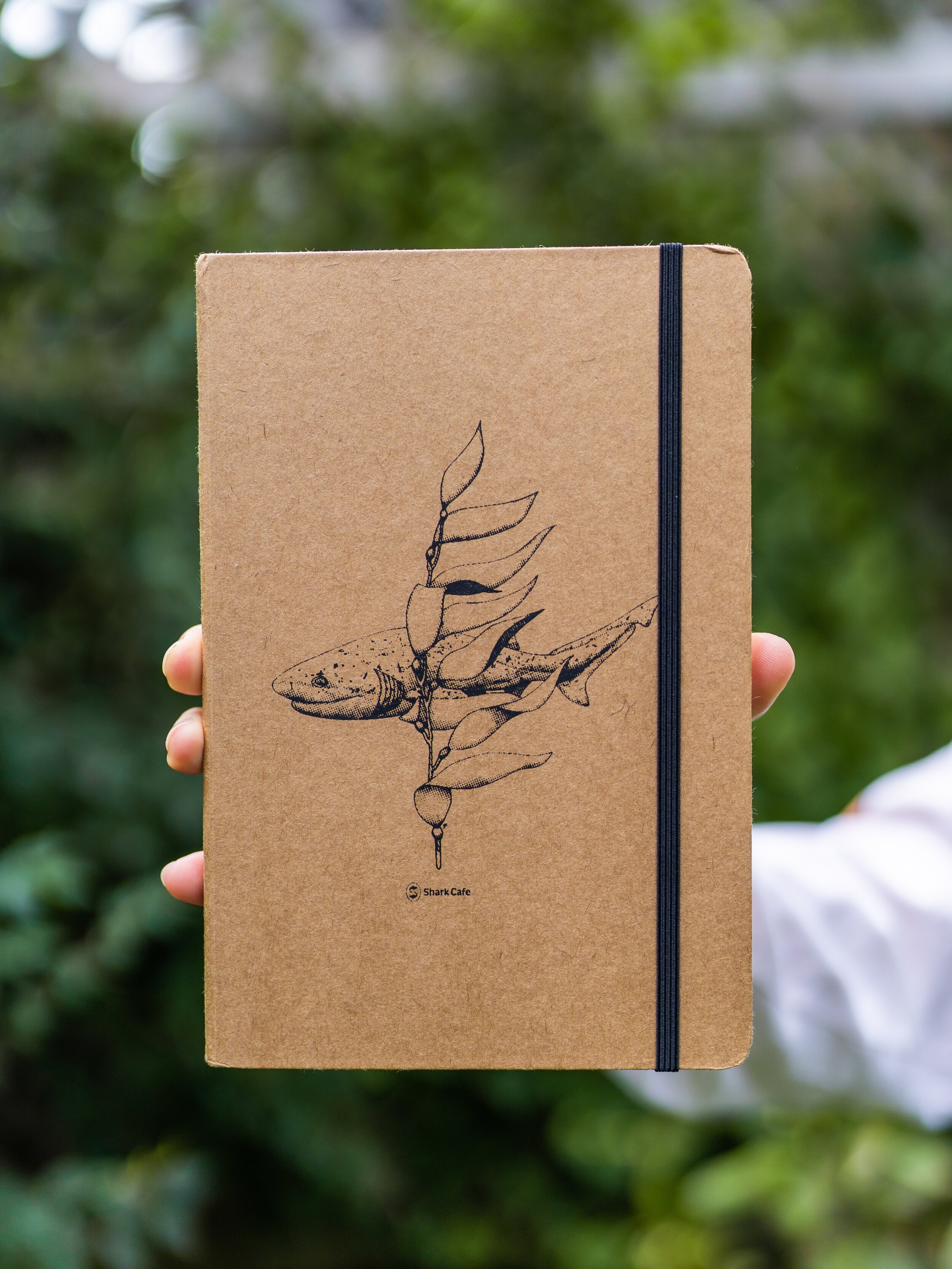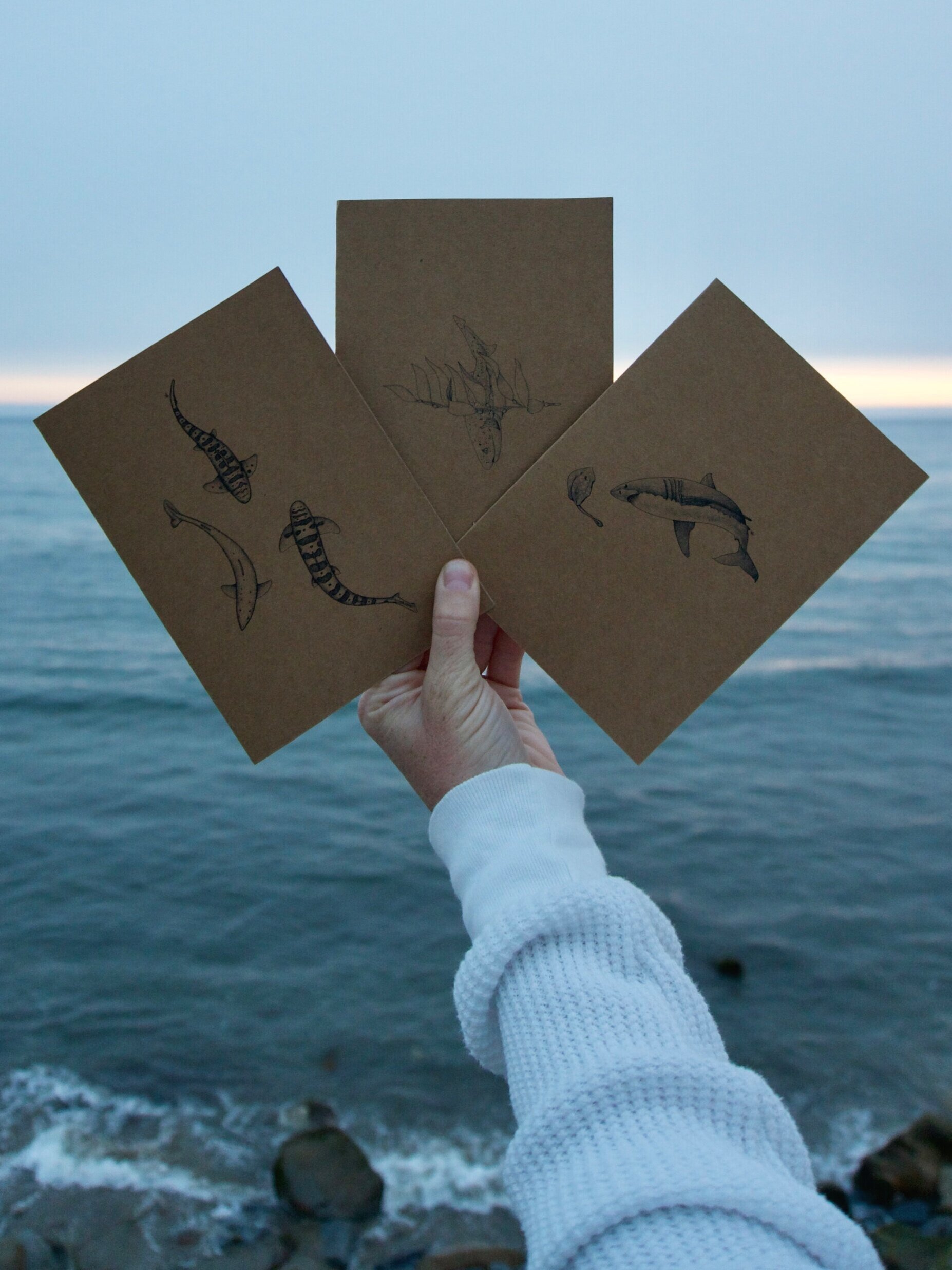Art for Activism: Jessica Heide
Our featured artist this month is Jessica Heide, a Seattle native who combines her passion for science, art and the natural world to create one-of-a-kind pieces that illustrate the beauty in the world. She created three unique illustrations for The Shark Cafe that showcase some of the shark species commonly found in Southern California: great white, sevengill and leopard. Jessica’s background in biology gives her a unique perspective on the pieces she creates, and she strives to tell a story with her work. The California shark series, for example, focuses on relationships between species within the kelp forest ecosystem.
SC: You grew up exploring the outdoors around Seattle. How do you think that shaped who you are today?
JH: I feel lucky to have grown up in the Pacific Northwest. Being able to explore the beaches of Puget Sound, camp in the Cascades, or to even just build a fort in the greenbelt behind our house had a profound effect on who I am today. Those early experiences ignited my interest in biology and ultimately conservation.
SC: Tell us a little about your journey to becoming an artist.
JH: I can remember drawing from an early age and took the occasional art class in school when I could. When I went to college, it was hard for me to imagine a career in art, so I decided to pursue biology, earning my BS. I went on to work in cancer research after graduating, but found myself missing art. I discovered a program in Scientific Illustration and it seemed like the perfect blend of art and science. I earned my certification in 2014 and have been freelancing ever since.
In order to push my artistic skills further, I attended the Gage Academy of Art doing two years of study in their Contemporary Atelier, under the mentorship of Mark Kang- O’Higgins. During this time I explored ideas of story telling within my work and continued to refine my technical skills. I think education is a lifelong process and I continue to take classes whenever I can.
SC: Most people view art and science on different sides of the spectrum, but you've found a way to combine both. Where do you find parallels between the two?
JH: To me, the two pair perfectly! Not only is art valuable for science communication, it is also a great learning tool. You are much more likely to remember and understand something that you’ve drawn than simply read about in a textbook.
Also, artists and scientists at their most basic do the same thing. They spend time making observations and then translating those into something meaningful.
SC: Tell us about the different methods you use in your work.
JH: Although I create in a variety of medias, I work primarily in watercolor and ink. I think there is something so beautiful about the way they both can capture a moment or a mood. When it comes to watercolor, it's the softness and somewhat unpredictability it has. With ink, I love that it forces you to make a decision and move on. I really enjoy stippling in ink and often find a meditative space, losing time as I build layers of dots to create a piece. Both create a truly happy place for me.
SC: Where do you find inspiration for your work?
JH: The short answer is everywhere! It can be something that catches my eye walking around the neighborhood, a visit to a museum, or even stories I’ve heard in the news or on a podcast.
Nature never ceases to amaze. Whenever I find a little thread that interests me, I make a note of it so that I can pursue it later when I find a piece that fits.
SC: What do you hope to convey through your art? What do you want the public to take away?
JH: For most of my work, I hope that it sparks joy and curiosity. We are surrounded by such amazing life and beauty, and if I can get the viewer to spend a few more moments focused on that, that’s a win in my book. You have to first appreciate the things around you before you will do the hard work to help conserve and protect their existence.
SC: How do you think art can support conservation efforts?
JH: I believe art has the ability to highlight the beauty and majesty in nature that may normally be overlooked. It can also make ideas that are less tangible or seem abstract easier to understand and relate to, such as ocean acidification or rising sea levels.
SC: You illustrate so many different species, from fish and amphibians to mammals. Do you have a favorite animal/species in real life?
JH: While I find joy in a number of species, I would have to say my favorite is the octopus. Similar to the shark, they are often misunderstood and under-appreciated. They are beautifully strange and so smart. I could watch them all day!
SC: Of all your illustrations, which is your personal favorite and why?
JH: This is perhaps the most difficult question to answer as there are many works that I love for various reasons. One worth highlighting though, is Octavia in a Bottle. I really enjoy the composition and subtlety of the pale blue landscape which allows the beauty of the octopus to be showcased. It also calls attention to the conservation issues of trash and ghost nets, nets that are left behind in the fishing process, which can end up in habitats endangering marine life.
SC: Besides art, what do you love to do in your free time?
JH: I’m a pretty avid rock climber. I mostly climb indoors, but am trying to make more time for climbing outdoors in all of the beautiful places that the PNW has to offer. I also love to listen to podcasts while creating art, crocheting, spending time with friends and family, and scuba diving!
The California shark series by Jessica Heide is now available in the Shark Cafe shop! Featuring three iconic California species - great white, sevengill and leopard shark - the collection tells a story about the relationship these apex predators have within the kelp forest ecosystem.


